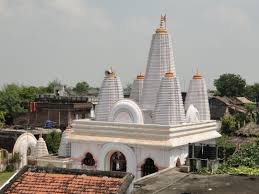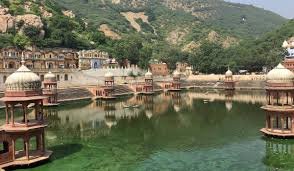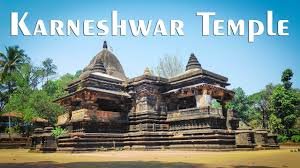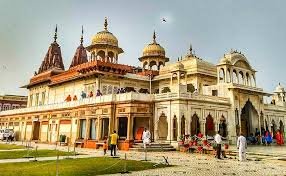Introduction
Amidst the modern skyline and bustling streets of Delhi lies a temple that dates back to ancient times—Yogmaya Temple. Located near the historic Qutub Minar, this temple is one of the oldest surviving shrines in Delhi and holds immense religious and historical significance. Dedicated to Goddess Yogmaya, an incarnation of Maya (illusion) and the sister of Lord Krishna, this temple stands as a testament to faith, tradition, and devotion. read more about Yogmaya Temple Delhi.
For those seeking divine blessings, historical insight, or a peaceful retreat from the chaos of the city, Yogmaya Temple offers a unique experience that blends spirituality with history.
Historical Significance of Yogmaya Temple
A Temple as Old as the Mahabharata Era
Yogmaya Temple is believed to have been built during the time of the Mahabharata, making it one of the rarest temples dedicated to Goddess Yogmaya in India. According to legend, Pandavas constructed this temple after the Kurukshetra war as a mark of respect to the divine feminine energy.
Over centuries, the temple has witnessed numerous historical events, including invasions and reconstructions. Despite the passage of time, it continues to be a revered site for devotees and historians alike.
Reconstruction by the Tomar Dynasty
The temple underwent significant restoration during the reign of Anangpal Tomar, the Rajput king who founded Delhi in the 11th century. He rebuilt the temple, ensuring its legacy remained intact. Since then, it has survived multiple invasions, including those by Mughals and British rulers, who either destroyed or neglected Hindu temples.
Architectural Beauty of Yogmaya Temple
A Testament to Simplicity and Spirituality
Unlike grand temple complexes with intricate carvings, Yogmaya Temple exudes a sense of simplicity and devotion. Built using local stone and bricks, the temple’s structure follows a traditional North Indian Nagar style.
Key Architectural Features
- Main Sanctum (Garbhagriha):
- Houses the idol of Goddess Yogmaya, adorned with traditional ornaments and flowers.
- The sanctum’s peaceful ambiance allows devotees to meditate and seek blessings.
- Shikhara (Temple Spire):
- The towering shikhara is a distinct feature, visible from a distance.
- Carved with Hindu symbols and motifs, it adds to the temple’s divine aura.
- Sacred Courtyard:
- Devotees gather in the open courtyard for prayer meetings and bhajans (devotional songs).
- The surrounding area is lined with small shrines and ancient trees, adding to its mystical charm.
- Proximity to Qutub Minar:
- Located near the famous Qutub Minar, the temple offers a unique contrast between Hindu spiritual heritage and Indo-Islamic architecture.
Religious Importance of Yogmaya Temple
A Place of Worship for Devotees
Yogmaya Temple is deeply revered by Hindus, especially devotees of Goddess Durga and Lord Krishna. The temple remains a site of continuous worship, with daily prayers and rituals conducted with great devotion.
Rituals and Ceremonies
- Morning and Evening Aartis: The temple performs two major aartis each day, attracting devotees who seek divine blessings.
- Offerings and Prayers: Devotees bring flowers, sweets, and lamps as offerings to the goddess.
- Bhajans and Kirtans: The temple frequently hosts spiritual gatherings and chanting sessions, enhancing the devotional atmosphere.
Festivals Celebrated at Yogmaya Temple
Phool Walon Ki Sair: A Unique Hindu-Muslim Festival
One of the most fascinating aspects of Yogmaya Temple is its association with Phool Walon Ki Sair, a festival that symbolizes Hindu-Muslim unity.
- This festival, which means “Procession of Flower Sellers”, dates back to the Mughal era.
- During the festival, floral offerings (chadars) are presented at both Yogmaya Temple and the nearby Sufi shrine of Khwaja Bakhtiyar Kaki.
- It is a rare example of communal harmony, showcasing Delhi’s rich history of religious coexistence.
Navratri Celebrations
- During Navratri, the temple witnesses a surge in visitors who come to offer prayers to Maa Yogmaya.
- Special pujas, fasting, and devotional music mark the celebrations, making it one of the most vibrant times to visit the temple.
Krishna Janmashtami
- Since Goddess Yogmaya is considered Krishna’s sister, Janmashtami is celebrated with great devotion at this temple.
- The idol is beautifully decorated, and the temple remains open till midnight, the time of Lord Krishna’s birth.
How to Reach Yogmaya Temple
Yogmaya Temple is conveniently located near Mehrauli, making it easily accessible by road and metro.
- The nearest metro station is Qutub Minar Metro Station (Yellow Line), just a short distance from the temple.
- Several DTC buses run towards Mehrauli, stopping near the temple.
- You can hire a cab or drive yourself; ample parking space is available nearby.
- Auto-rickshaws and cycle rickshaws frequently operate in the area, providing convenient last-mile connectivity.
Temple Timings and Entry Fee
- Entry Fee: Free for all visitors.
- Timings:
- Morning: 6:00 AM – 12:00 PM
- Evening: 4:00 PM – 8:00 PM
- Open: All days of the week.
Nearby Attractions to Explore
When visiting Yogmaya Temple, you can also explore these nearby historical sites:
- Qutub Minar: The tallest brick minaret in the world, a UNESCO World Heritage Site.
- Iron Pillar of Delhi: A remarkable rust-resistant pillar from ancient India.
- Mehrauli Archaeological Park: Home to several ruins, tombs, and historical structures.
- Jahaz Mahal: A stunning water palace that dates back to the Lodi era.
Why You Should Visit Yogmaya Temple
- Experience Ancient Spirituality: The temple’s history traces back to the Mahabharata era, making it a must-visit for devotees and history enthusiasts.
- Witness Cultural Harmony: The temple’s connection with the Phool Walon Ki Sair festival highlights Delhi’s unique blend of Hindu and Muslim traditions.
- Explore Nearby Heritage Sites: Located near Qutub Minar and Mehrauli, the temple visit can be combined with a historical tour.
- Participate in Vibrant Festivals: During Navratri, Janmashtami, and Phool Walon Ki Sair, the temple offers an extraordinary spiritual experience.
- Find Inner Peace: The temple’s serene atmosphere and devotional ambiance provide a perfect retreat from Delhi’s busy life.
Conclusion
The Yogmaya Temple is more than just a place of worship—it is a living relic of Delhi’s spiritual and historical past. From its Mahabharata-era origins to its role in fostering communal harmony, this temple embodies faith, resilience, and tradition.
So, if you are in Delhi, don’t miss the chance to visit Yogmaya Temple. Whether you seek divine blessings, a glimpse of history, or a peaceful retreat, this temple promises an enriching experience that will stay with you forever.





